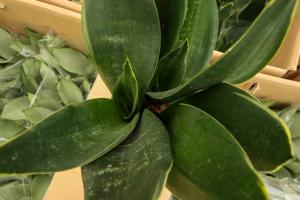Why Worms in My Tomato Plant
Tomatoes are a popular home garden vegetable but are also very appealing to a diverse array of insect pests and diseases. One of the most common pests gardeners face is the tomato fruitworm, also known as the corn earworm. These worms can cause significant damage to tomato plants, and can ruin entire crops if left unchecked.
What Are Tomato Fruitworms?
Tomato fruitworms are the larvae of a moth species called Helicoverpa zea. These worms are about 1 inch in length, and they have a light green or brown body with black stripes. They are most active during the first few hours of darkness and tend to feast upon the immature fruits of plants. As they develop into adults, they become nocturnal and start laying their eggs on various plant species, including tomatoes, corn, beans and cotton.
Damage Caused by Tomato Fruitworms
Tomato fruitworms are voracious eaters and can cause significant damage to tomato plants. They usually attack the green fruit, making small holes that grow bigger as the worm grows in size. The affected fruit may also turn yellow or brown and might drop prematurely from the plant. In some cases, the tomato fruitworms can bore into the fruit and feed on the inside, causing extensive damage that may leave the tomato inedible. In addition to tomatoes, they can also cause similar damages on other crops they feed on.
How to Identify Tomato Fruitworms?
Knowing how to identify tomato fruitworms is essential in managing them effectively. The adult moths are brownish-tan and have a wingspan of up to 1.5 inches. The larvae are pale green or brown and are distinguished by a white or light-colored line on each side of their bodies. To confirm the presence of tomato fruitworms in your garden, check the young fruits for the presence of holes or feeding damage.
Preventing and Controlling Tomato Fruitworms
You can prevent tomato fruitworm infestation by practicing good garden hygiene. This includes removing plant debris and excess vegetation from the garden, which can provide shelter for the pests. Also, rotating your crops annually can be beneficial in reducing the population of the tomato fruitworms as they cannot survive without host plants.
You can also use physical barriers such as row covers to prevent the adult moths from laying eggs on the plant. Chemical control can also be an effective method of mitigation. Products like spinosad, Bacillus thuringiensis (Bt), and carbaryl can help to control the tomato fruitworms effectively. It's important to use these products according to the manufacturer's instruction and avoid applying them when the blooms are open to prevent harming pollinators.
Conclusion
Tomato fruitworms can cause significant damage to tomato plants and other host plants. Knowing how to identify and control them is essential in preventing extensive damage to your garden. Practicing good garden hygiene and using physical or chemical control measures are some of the effective control methods. By being proactive in managing these pests, you can enjoy a bountiful harvest of tomatoes and other garden vegetables.

 how many times do yo...
how many times do yo... how many planted tre...
how many planted tre... how many pine trees ...
how many pine trees ... how many pecan trees...
how many pecan trees... how many plants comp...
how many plants comp... how many plants can ...
how many plants can ... how many plants and ...
how many plants and ... how many pepper plan...
how many pepper plan...
































